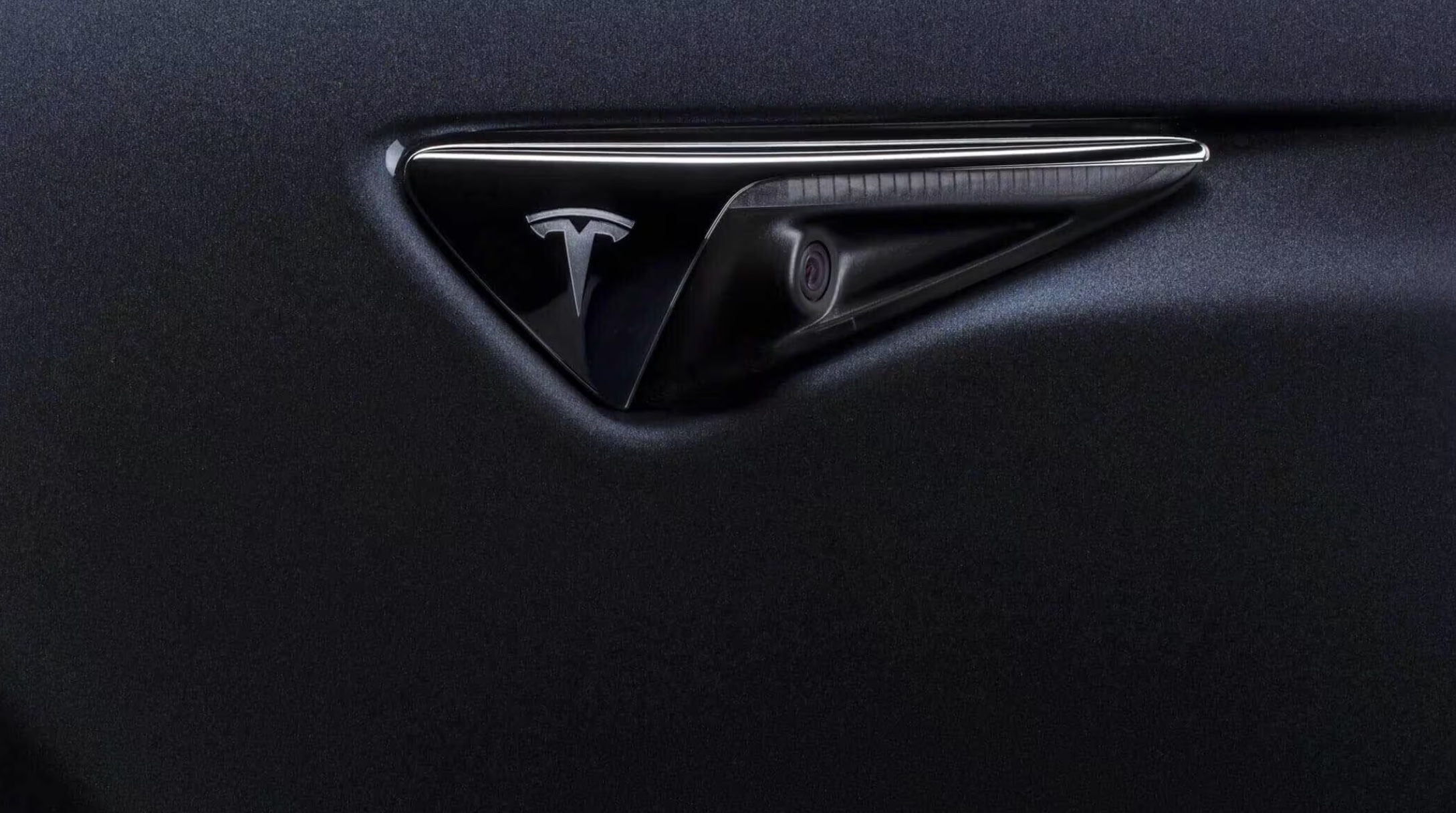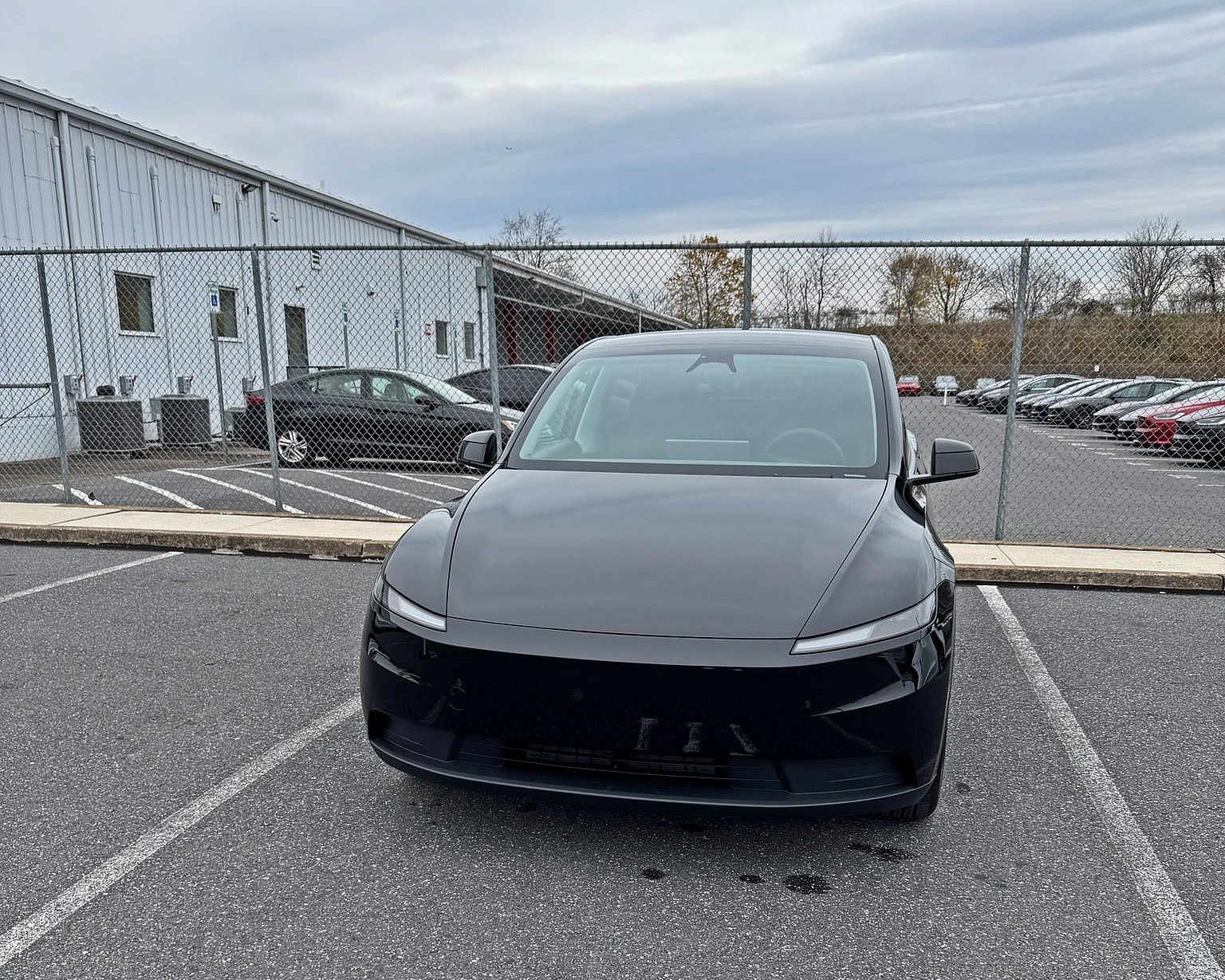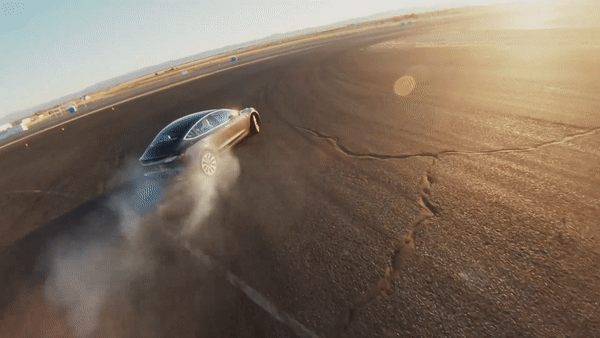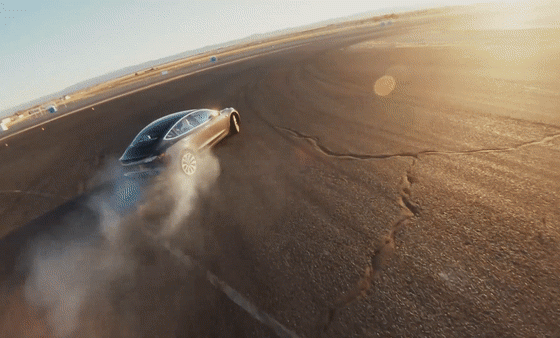Tesla has announced that it is starting the rollout of Track Mode, a feature of the Model 3 Performance that allows the car to perform better on a racecourse, today. In light of the feature’s release, Tesla has published a blog post outlining the science behind Track Mode, as well as the feature’s specifics.
While Tesla’s other performance-oriented upgrades like Ludicrous Mode for the Model S and X help a vehicle with straight-line acceleration, Track Mode helps the company’s electric cars handle corners better. Tesla’s blog post notes that Track Mode was designed specifically to be used on closed autocross circuits and racetracks. The company also pointed out that its goal behind the development of Track Mode was simple — they wanted to use the power of the vehicle’s electric motor and instant torque to “make cornering on the track feel just as natural as forward acceleration.”
Track Mode enables vehicles to precisely control whether torque goes to the front or the rear wheels. This allows the Model 3 Performance to instantly increase or decrease the car’s rotation in a corner. With such a system in place, racing enthusiasts would find that highly technical driving sessions on a closed circuit would be a lot easier.
Track Mode starts rolling out today
— Tesla (@Tesla) November 8, 2018
Unlike the usual Sport Modes of legacy carmakers, which usually involve the disabling of stability control, the Model 3 Performance’s Track Mode adds features to the vehicle. Tesla accomplished this by replacing the electric car’s stability control system with its own Vehicle Dynamics Controller — a software specifically developed for the company’s electric vehicles that acts as both a stability control system and a performance enhancement on the track. Tesla also provided a summary of the features that are employed by Track Mode when it is activated.
Motor Torque for Rotation
Our Vehicle Dynamics Controller continually monitors the state of the vehicle and all of the inputs from the driver to determine the driver’s intention and affect the rotation of the car in a matter of milliseconds. Track Mode relies heavily on the front and rear motors to control the car’s rotation, and we have the ability to command a 100% torque bias. When cornering, if rotation is insufficient to the driver’s request, the system controls a rear biased torque. Conversely, when rotation is excessive, we command a front biased torque.
Increased Regenerative Braking
Heavy regenerative braking may not be comfortable for day-to-day driving, but on a track, it has several key advantages. It gives the driver more authority with a single pedal, improves the endurance of the braking system, and sends more energy back into the battery, maximizing the battery’s ability to deliver large amounts of power. It also gives the Vehicle Dynamics Controller more authority to create or arrest rotation with the motors when your foot is lifted off of the accelerator pedal.
Track Focused Powertrain Cooling
The high output power required for track driving generates a lot of heat, so endurance on the track requires more aggressive cooling of the powertrain. We proactively drop the temperatures of the battery and the drive units in preparation for the track and continue to cool them down in between drive sessions. We can also allow operation of the powertrain beyond typical thermal limits and increase our refrigerant system capacity by overclocking the AC compressor into higher speed ranges.
Enhanced Cornering Power
We typically think of using brakes to slow down a car, but you can actually use them to make the car faster out of a corner. All Model 3s are equipped with open differentials, which send an equal amount of torque from the motors to both the left and right wheels. When cornering, the wheels on the inside of the corner have less load on them, which means they can provide less tractive force than the outside wheels. To prevent excess slip on this inside tire, we have to limit the torque for both wheels, leaving power on the table. In Track Mode, we simultaneously apply brake and motor torque to produce a net increase in tractive force while cornering. This is similar to how a limited slip differential works, except when using the brakes, the differential can be optimized for various driving conditions.
What is particularly exciting about the release of Track Mode is the fact that it is just the first version of the system. On its blog post, Tesla noted that Track Mode is set to improve further in the future through over-the-air updates.
When Elon Musk announced the Model 3 Performance on Twitter, he noted that the vehicle would be around 15% faster than a BMW M3 on the track. Considering the pedigree of the German-made performance sedan as well as the tendency of Tesla’s previous vehicles to throttle their performance on a track, Musk’s claims were met with a notable degree of skepticism from both avid car enthusiasts and critics alike. That said, initial reviews of the feature were notably positive.
Tesla conquered the drag strip with Ludicrous Mode. It remains to be seen if the company can do the same on the closed circuit with Track Mode. Considering the deliberate design of the feature, though, there is a pretty good chance that the Model 3 Performance would soon be just as formidable on the track as the Model S P100D is on the drag strip.

News
Tesla Full Self-Driving warrants huge switch-up on essential company strategy

Tesla Full Self-Driving has warranted a huge switch-up on an essential company strategy as the automaker is hoping to increase the take rate of the ADAS suite.
Unlike other automotive companies, Tesla has long been an outlier, as it has famously ditched a traditional advertising strategy in favor of organic buzz, natural word-of-mouth through its production innovation, and utilizing CEO Elon Musk’s huge social media presence to push its products.
Tesla has taken the money that it would normally spend on advertising and utilized it for R&D purposes. For a long time, it yielded great results, and ironically, Tesla saw benefits from other EV makers running ads.
Tesla counters jab at lack of advertising with perfect response
However, in recent years, Tesla has decided to adjust this strategy, showing a need to expand beyond its core enthusiast base, which is large, but does not span over millions and millions as it would need to fend off global EV competitors, which have become more well-rounded and a better threat to the company.
In 2024 and 2025, Tesla started utilizing ads to spread knowledge about its products. This is continuing, as Full Self-Driving ads are now being spotted on social media platforms, most notably, X, which is owned by Musk:
NEWS: Tesla is running paid advertisements on X about FSD (Supervised). Here’s an ad they started running yesterday: pic.twitter.com/IHVywLMyTd
— Sawyer Merritt (@SawyerMerritt) November 25, 2025
Interestingly, Tesla’s strategy on FSD advertising is present in Musk’s new compensation package, as the eleventh tranche describes a goal of achieving 10 million active paid FSD subscriptions.
Full Self-Driving is truly Tesla’s primary focus moving forward, although it could be argued that it also has a special type of dedication toward its Optimus robot project. However, FSD will ultimately become the basis for the Robotaxi, which will enable autonomous ride-sharing across the globe as it is permitted in more locations.
Tesla has been adjusting its advertising strategy over the past couple of years, and it seems it is focused on more ways to spread awareness about its products. It will be interesting to see if the company will expand its spending even further, as it has yet to put on a commercial during live television.
We wouldn’t put it out of the question, at least not yet.
News
Tesla Model Y Standard: first impressions from a Premium owner

Tesla was nice enough to hook us up with the new Model Y “Standard” trim for a few days, and while we’ll be sure to fill you in on the full experience in the coming days, there are a lot of differences we noticed right off the bat, which make the ownership experience different from the “Premium” configuration level.
I purchased a Model Y Long Range All-Wheel-Drive back in August and took delivery just two weeks later. Through the first three months of owning my car, I’ve come to love so many things about the Tesla experience.
I traded my ICE vehicle for a Tesla Model Y: here’s how it went
However, I was interested in experiencing the affordable trim and seeing whether I would miss any of the voided features of the “Premium” Model Y.
Through the first 24 hours, here are my first impressions of the Model Y Standard as a Premium trim level owner:
Overall Aesthetic
The lack of a light bar is not something that is a dealbreaker. In fact, I would argue that the Model Y Standard’s more traditional headlight design is just as pleasing from an aesthetic standpoint.
The car is great looking from top to bottom; there are not a substantial number of differences besides the lack of a lightbar on both the front and the back of the car.
Overall, it is a very sleek vehicle, but the major changes are obviously with the interior.
Interior Changes
This is where the big differences are, and some of the things I’ve gotten used to in the Premium are not included. If I didn’t have a Premium Model Y already, I’m not sure I’d miss some of the things that are not present in the Standard trim, but I believe I’d get annoyed with it.
First impressions:
✅ Interior is excellent. I definitely miss the additional storage already that is available in my Premium. I could definitely get over it though
✅ Noticeable step down in sound system. Long Time by Boston absolutely cranks in the Premium; it’s still very… https://t.co/JNWvxTd8p1
— TESLARATI (@Teslarati) November 25, 2025
Storage
The Premium has a large storage compartment between the cupholders and the wireless charger, which is not present in the Standard trim. Instead, it is more like the Cybertruck, as there is a pass-through and floor storage.
I think that the pass-through is nice, but the additional storage is something I take advantage of, especially as someone who films Full Self-Driving videos, which requires hauling mounts, GoPros, and other accessories.
The sleekness of the Premium trim is also something I prefer; I really enjoy having the ability to close those compartments and cover the cupholders.
Obviously, this is a really trivial issue and not something that is substantially impactful from an ownership experience. If I weren’t already an owner, I am not sure I’d even have something to complain about.
Material Differences
The Premium trim seats are completely Vegan Leather, which I really do like, even as someone who doesn’t really love leather seats due to their temperature dependency.
The Standard trim features a Textile and Vegan hybrid, which has half of the seat a different material than the other.
The material is very similar to what I had in my previous car, a Bronco Sport. It was very durable, easy to clean, dried quickly, and hid a lot of things that leather does not, like oils from your skin, which constantly require attention to keep your interior looking fresh.
The wireless charger is also a different material, as the Premium features an Alcantara material on that. The Standard has a rubberized and textured backing, which looks good, too. They’re both more than suitable.
Other Missing Features
The Standard lacks a few minor things, most noticeably is the ambient lighting. The biggest change, however, and something I really miss, is the glass roof.
A lot of people told me that when I got my Model Y, I wouldn’t even notice the glass roof after a few weeks. That could not be further from the truth. I look out of it all the time, and it’s one of my family’s favorite parts of the car.
My Fiancè and I really love parking and watching Netflix when we pick food up, especially when it’s raining, because the glass roof gives such a great view.
We also loved it as Fall arrived, because it was great to look at the foliage.
Buy the Tesla.
Enjoy the glass roof. pic.twitter.com/r2GDyOEEWu
— TESLARATI (@Teslarati) October 28, 2025
Bigger Differences
There are also a handful of very noticeable differences from the overall cabin experience, especially with the sound system.
Much Weaker Sound System
The Model Y Standard has just 7 speakers and 1 amp, with no subwoofer. This is a significant step down from the 13-15 speakers in the Premium Long Range AWD Model Y, the 2 amps it comes with, and 1 subwoofer in the trunk.
I usually like to listen to Long Time by Boston to test out a sound system, and it was noticeably weaker in the Standard. It was missing a big portion of the umph that is provided by the Premium’s sound system.
Cabin Noise
It feels like the Cabin Noise is definitely more noticeable in the Standard, which is something I really love about my Model Y. It is able to dampen so much road noise from louder cars, and I don’t feel as if it is very quiet in the Standard.
This is perhaps the biggest make-or-break for me with this car. I truly have been spoiled by how quiet the cabin is in the Premium, and it’s due to the lack of acoustic-lined glass in the Standard.
I will be doing a more in-depth review of the Model Y Standard, especially with ride quality, later this week.
News
Tesla takes a step towards removal of Robotaxi service’s safety drivers
Tesla watchers are speculating that the implementation of in-camera data sharing could be a step towards the removal of the Robotaxi service’s safety drivers.

Tesla appears to be preparing for the eventual removal of its Robotaxi service’s safety drivers.
This was hinted at in a recent de-compile of the Robotaxi App’s version 25.11.5, which was shared on social media platform X.
In-cabin analytics
As per Tesla software tracker @Tesla_App_iOS, the latest update to the Robotaxi app featured several improvements. These include Live Screen Sharing, as well as a feature that would allow Tesla to access video and audio inside the vehicle.
According to the software tracker, a new prompt has been added to the Robotaxi App that requests user consent for enhanced in-cabin data sharing, which comprise Cabin Camera Analytics and Sound Detection Analytics. Once accepted, Tesla would be able to retrieve video and audio data from the Robotaxi’s cabin.
Video and audio sharing
A screenshot posted by the software tracker on X showed that Cabin Camera Analytics is used to improve the intelligence of features like request support. Tesla has not explained exactly how the feature will be implemented, though this might mean that the in-cabin camera may be used to view and analyze the status of passengers when remote agents are contacted.
Sound Detection Analytics is expected to be used to improve the intelligence of features like siren recognition. This suggests that Robotaxis will always be actively listening for emergency vehicle sirens to improve how the system responds to them. Tesla, however, also maintained that data collected by Robotaxis will be anonymous. In-cabin data will not be linked to users unless they are needed for a safety event or a support request.
Tesla watchers are speculating that the implementation of in-camera data sharing could be a step towards the removal of the Robotaxi service’s safety drivers. With Tesla able to access video and audio feeds from Robotaxis, after all, users can get assistance even if they are alone in the driverless vehicle.










